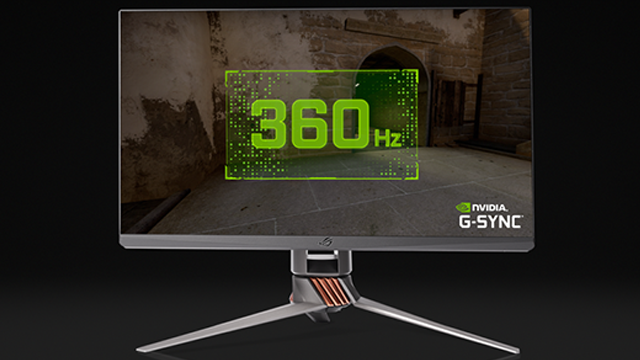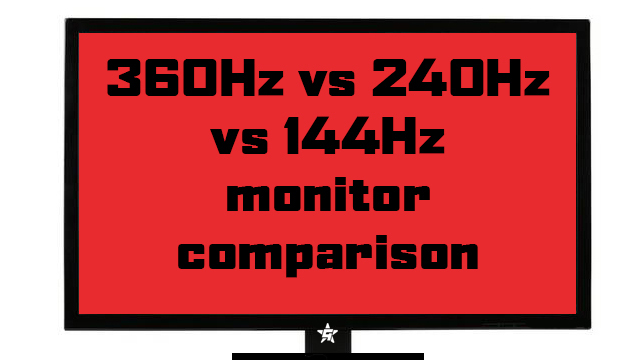CES 2020 is just getting started and one of the most notable announcements so far has been that of the world’s first 360Hz PC monitor. Hertz (Hz) refers to the screen’s refresh rate, which denotes how many frames per second can be displayed. By supporting up to a massive 360 frames per second, Nvidia and Asus’ ambitious new collaboration, the Asus ROG Swift 360Hz, seems like the perfect fit for any serious PC gamer, but is the upgrade really worth it? Or would you be better served to save money and buy a 144Hz or 240Hz monitor instead? Here’s everything you need to know in our 360Hz vs 240Hz vs 144Hz monitor comparison guide.
144Hz is enough to be competitive

Although most console games run at 30 or 60 frames per second, which has helped to perpetuate false rumors that the human eye can’t perceive anything above that, to be truly competitive in the high tech PC gaming space 144Hz is the recommended minimum screen spec. It’s the competitive minimum, sure, though if you’re a casual player that’s more concerned with having a good time than maximizing your potential, you may wish to opt for a monitor with a lower refresh rate to save money.
ALSO: Microsoft’s understated Xbox Series X reveal says a lot about its future
By upgrading to a 144Hz monitor from a lesser model, you should see great strides in the fluidity of gameplay immediately. The higher screen refresh rate will reduce latency and improve responsiveness for a better overall gameplay experience, but also help to eliminate distracting visual issues such as ghosting and screen tearing.
Of course, it’s important to note that you’ll also need the appropriate PC hardware to power those 144Hz visuals. For the monitor to display at its maximum refresh rate, your PC needs to be able to run the competitive games you play at 144 frames per second. Thankfully, a majority of the most popular competitive games have low minimum specs by design, ensuring that they reach the widest possible audience. This means that common graphics cards like the Nvidia GTX 1080 should be capable of outputting the kind of power you’ll need to achieve 144 frames per second in most modern competitive games.
240Hz is a technical improvement, but returns are diminished

The jump from 144Hz to 240Hz doesn’t land with quite the same weight as moving from 60Hz to 144Hz; as the numbers progressively get higher, so too do the levels of diminishing returns. To use an analogy grounded in display tech, consider the ongoing transition from HD to 4K, which arguably isn’t as notable as the jump from SD to HD was — though a marked improvement is still evident, no doubt.
You’ll get all of the same gameplay and visual benefits as upgrading to 144Hz (reduced latency, greater responsiveness, less ghosting, and less screen tearing), only to a greater extent. There’s no question that 240Hz is better, but obviously there are increasing monitor and potential GPU costs to consider when opting for the technology. That being said, a majority of competitive players are now playing at 240Hz and disparity is likely to grow over time as it comes down in price. If you’re interested in future-proofing your setup, now could be a good time to invest.
360Hz is aimed at professional esports athletes

If you’re an average Joe gamer, or even into the competitive scene but not competing at the highest level, then at the time of writing a 360Hz monitor is in no way a necessity. The debut monitor of this spec, the Asus ROG Swift 360Hz, is undoubtedly impressive and could well improve your gameplay experience if you have the hardware to back it up, but due to the aforementioned diminishing returns, it should only be seriously considered by the most devoted competitive players.
Pricing for the Asus ROG Swift 360Hz hasn’t yet been announced, but with time and the introduction of competition to the 360Hz monitor marketplace, the cost of entry will come down and make the transition a more enticing one.










